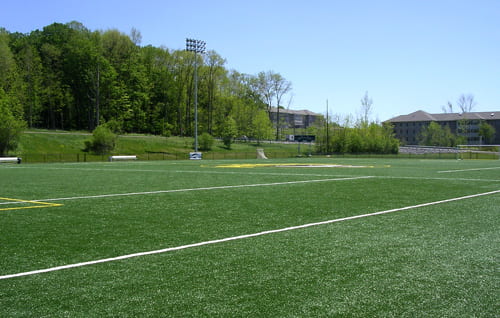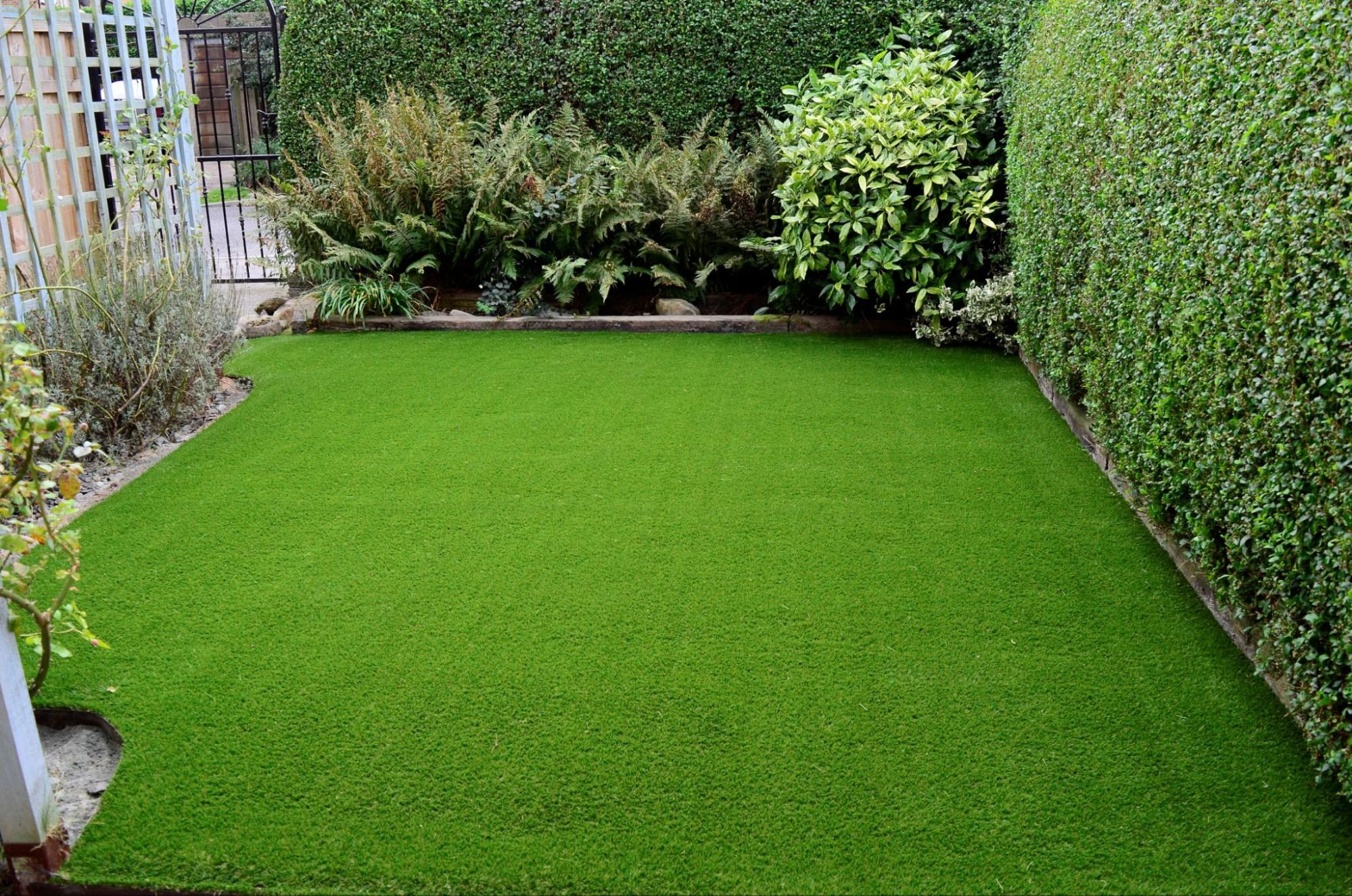Top Arizona Turf Providers Offering a Natural-Looking Lawn Option
Top Arizona Turf Providers Offering a Natural-Looking Lawn Option
Blog Article
Delve Into the Environmental Conveniences of Opting for Synthetic Grass Solutions
The adoption of synthetic grass solutions offers a compelling chance to address pushing environmental challenges. By significantly reducing water use and lessening the application of harmful chemicals, these options not just promote sustainable landscaping however likewise secure regional ecological communities. The lower carbon footprint connected with lowered upkeep tasks contributes to an extra sustainable technique to land management. The ramifications of these advantages prolong beyond mere conservation initiatives, raising concerns about their long-term influence on habitat conservation and total environmental balance. Exploring these dimensions discloses a complicated interaction worth taking into consideration.
Water Preservation Advantages
One of the most considerable advantages of fabricated grass is its capacity to conserve water. In contrast, artificial turf does not need watering, significantly lowering the total demand for water sources.
By getting rid of the demand for normal watering, synthetic grass adds to sustainable landscape techniques and aids minimize the ecological effect of too much water intake. The conservation of water extends to the reduction of drainage, which can lead to soil disintegration and river air pollution.
In addition, the setup of artificial turf enables home owners and communities to allot water sources more effectively, concentrating on vital uses such as alcohol consumption water and farming. The shift in the direction of synthetic grass not just advertises liable water use but also aligns with wider environmental goals intended at protecting natural resources.
As neighborhoods significantly focus on sustainability, the water conservation advantages of synthetic grass offer a compelling situation for its adoption in domestic and industrial landscape design projects.
Lowered Chemical Use
The change to synthetic grass considerably lowers the dependence on chemical therapies commonly utilized in natural grass maintenance. Conventional turf management usually involves the application of herbicides, pesticides, and fertilizers to promote growth and control pests. These chemicals can position risks to human health, local wild animals, and the setting, contributing to soil and water contamination.
In contrast, fabricated grass eliminates the need for these unsafe compounds. By minimizing the release of artificial substances into the community, synthetic turf promotes healthier soil and water systems.
In addition, the lack of chemical drainage related to fabricated lawn installations helps shield neighborhood waterways from air pollution, supporting aquatic life and keeping biodiversity. Arizona artificial turf. As neighborhoods progressively prioritize lasting practices, selecting fabricated turf provides a sensible solution that aligns with ecological conservation goals. Through this shift, homeowner can appreciate lavish environment-friendly spaces without compromising eco-friendly health, leading the way for an extra sustainable future
Reduced Carbon Impact

In addition, the installation of man-made grass can lead to significant water conservation. All-natural yards require significant amounts of water for irrigation, which not just adds to the carbon impact connected with water removal and treatment but also stress local water sources. On the other hand, synthetic grass needs very little upkeep, requiring no watering, thereby dramatically lowering water usage and its connected energy costs.
In addition, the longevity of synthetic grass adds to its lower carbon influence. With a life-span of approximately 15 years or more, the demand for frequent replacements is decreased, resulting in less waste and lower power consumption in production and getting rid of typical turf alternatives. On the whole, man-made grass presents a sustainable alternative for environmentally mindful landscaping.
Habitat Preservation
Habitat conservation is a crucial factor to consider in the argument over landscape design options, especially when contrasting man-made grass to natural turf. All-natural grass lawns usually require substantial maintenance, consisting of using plant foods, herbicides, and pesticides, which can detrimentally influence regional ecological communities. These chemicals can leach into the soil and waterways, hurting indigenous vegetation and fauna and interrupting regional habitats.
In contrast, fabricated turf presents an opportunity to minimize the ecological impact of landscape design. By going with artificial turf, home owners can minimize the disturbance of natural habitats related to typical yard treatment methods. you can try these out Artificial turf gets rid of the demand for damaging chemicals, therefore protecting close-by wildlife and maintaining the honesty of bordering ecological communities. The installation of synthetic grass can lead to the conversion of previous turf areas right into more biodiverse landscapes, such as pollinator gardens or indigenous plant locations, which can support local wildlife.
Ultimately, the transition to synthetic grass not just saves water and reduces maintenance efforts however likewise fosters a more harmonious partnership in between human tasks and the natural surroundings, advertising habitat preservation in the procedure.
Long-Term Sustainability
Long-lasting sustainability is a critical variable in assessing the benefits of synthetic grass over conventional lawn yards. One of one of the most substantial benefits of fabricated turf is its longevity; it can last up to 15-20 years with very little upkeep, whereas all-natural yard needs frequent reseeding and replacement. This durability decreases the demand for continuous resources, such as water, fertilizers, and pesticides, which are vital for maintaining a healthy and balanced turf yard.
Furthermore, synthetic grass adds to a reduction in carbon discharges connected with grass treatment equipment. Typical yards usually call for gas-powered lawn mowers, leaners, and blowers, all of which contribute to air contamination. Phoenix turf over at this website companies. On the other hand, fabricated turf removes the demand for such devices, advertising a cleaner environment
Additionally, the manufacturing of man-made grass significantly makes use of recycled products, boosting its sustainability account. As suppliers embrace environment-friendly methods, the environmental footprint of man-made turf proceeds to diminish.

Final Thought
The fostering of synthetic grass remedies provides significant environmental benefits, including substantial water preservation, reduced dependence on harmful chemicals, and a lower carbon footprint. Moreover, artificial grass help in maintaining all-natural habitats by reducing land disturbance and advertising long-lasting sustainability with the use of resilient products. Jointly, these variables highlight the possibility of synthetic grass to contribute favorably to ecological health and wellness and offer a viable choice to typical landscape design methods in an increasingly resource-conscious world.
In contrast, artificial turf does not require watering, significantly decreasing the general need for water sources. By minimizing the release of artificial substances right into the ecological community, man-made turf promotes much healthier dirt and water systems.
In addition, the installment of man-made grass can result in considerable water preservation. In comparison, synthetic turf requires minimal maintenance, calling for no watering, thereby considerably reducing water use and its associated energy prices.

Report this page